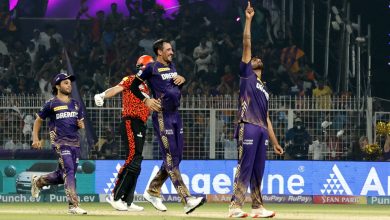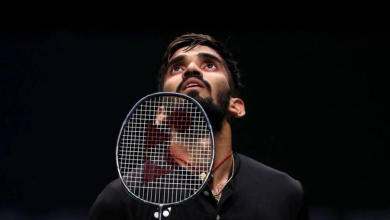Unusual bowling action could be making Jasprit Bumrah injury prone and testing his all-format availability

In yet another setback to his return from a back injury, Jasprit Bumrah has been ruled out of India’s three-match ODI series against Sri Lanka.
The fast bowler has been sidelined since August 2022, missing multiple T20I series as well as the Asia Cup. He recovered in time to play two T20Is against Australia, but aggravated his injury, missed the T20 World Cup, and is yet to return since.
As the focus shifts to the ODI World Cup in India in October, Bumrah has been handed another blow in his preparations, as he could possibly miss six consecutive ODIs – India will play three against New Zealand immediately after Sri Lanka – if he suffers another sustained period out of action.
Back problems are nothing new for India’s foremost pacer. His current injury is his longest period on the sidelines, but as recently as 2019-20, he spent three months out after suffering a stress fracture in his lower back.
Potential reasons
Bumrah’s unconventional high-arm action, short run up to the crease, and physcial exertion at the point of release could all be issues that are making him injury prone. Andy Roberts once told The Indian Express that the 29-year-old’s action was the “the strangest action that I have seen on a cricket field.”
Stress fractures or issues in the back have been common among fast bowlers in the past, but even with advances in modern sports science, it remains an issue for Bumrah. Different reasons for the injury have been cited experts in the past, from improper fitness and training regimens to poor workload management. But Bumrah’s action has often led to debate over his longevity as an all-format player.
Former Pakan pacer Shoaib Akhtar had flagged his action, and warned Team India and the bowler to manage his workload well, if injuries are to be avoided. “His bowling is based on frontal action. Players with that action bowl with their backs and shoulder speed. We used to be side-on, and that used to compensate (for the pressure on the back). A front-on action has no compensation and with that action, when the back gives in, you can’t escape it irrespective of how much you try,” Akhtar had told Sports Tak.
Bumrah’s open-chested, front-on bowling action needs careful execution to avoid injuries. While Bumrah’s action is a major reason for him being one of the world’s best, finding pace, deceiving batsmen, and being able to swing the ball both ways. It is also extremely physical.
Following Bumrah’s first lower-back stress fracture in 2020, former West Indian pacer Michael Holding, an all-time great, had sounded a need for caution over the physically brutal nature of the 29-year-old’s bowling style. Holding had said that Bumrah derives the final few kilometers of pace hitting the deck hard at the time of release, as opposed to letting the ball skid off the surface, putting more pressure on his back and shoulder. Stress fractures are more common in load-bearing areas like the back, foot, or hip.
“My problem with Bumrah and I mentioned it to him, is how long that body will hold up with that short run and the amount of effort he has to put into his bowling, it is a human body. It is not a machine ,” Holding was quoted as saying PTI.
Holding’s concerns over the physical nature of Bumrah’s bowling style combined with a short run up were echoed legendary former New Zealand all-rounder Richard Hadlee. In an interview with the ICC, Hadlee said that since “all his power and pace comes from the final part of his action as he releases the ball,” problems with injuries are more likely. Hadlee said that Bumrah’s longevity in the game is yet to be determined.
Bumrah’s latest setback comes at a crucial point. Australia’s tour of India, in which they will play five tests and three ODIs, and the IPL will come in rapid succession before India shift their focus to developing their best XI for the World Cup.







